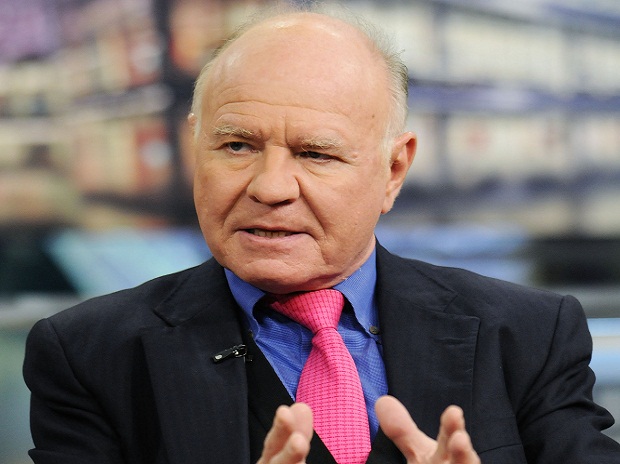Wealth Building Strategies
“If you’re not failing every now and again, it’s a sign you’re not doing anything very innovative.”
– Woody Allen
 Last week I published a post on called Creating a Culture of Innovation which featured the six most important steps I believe a leader should take to build a highly innovative culture. The step that generated the greatest interest is leading by example, which is the subject of this article.
Last week I published a post on called Creating a Culture of Innovation which featured the six most important steps I believe a leader should take to build a highly innovative culture. The step that generated the greatest interest is leading by example, which is the subject of this article.They will also embark on a process of lifelong learning and renewal. Developing leadership skills requires tremendous effort and time dedication with a constant reinforcement of better habits.
Finally, leading an innovative requires any leader to show humility and turn to his talented people, not out of weakness, but out of strength. This will encourage all employees to embrace a culture where it is okay to admit that they don’t have every answer to every question and that the true innovations coming from closing that knowledge gap in a way that creates something bigger for the company and better for the customer.
By Eamonn Percy
….also from Eamonn: Creating a Culture of Innovation


Now, places like downtown Phoenix, Tempe and Scottsdale are buzzing with entrepreneurs and new companies in the tech space. There are an estimated 132,000 high-tech jobs in Arizona, according to a TechAmerica Cyberstates report.
“We’re beginning to gain a reputation that there’s a real tech community here,” said Steven G. Zylstra, president and CEO of the Arizona Technology Council… CLICK HERE for the complete article
brought to you by Western Wealth Capital

 “An investment in knowledge pays the best interest.” – Benjamin Franklin
“An investment in knowledge pays the best interest.” – Benjamin FranklinBy building a culture of innovation into the DNA of both your leadership and company, you become more competitively positioned and create greater long-term shareholder value. Business leadership must be persistent, aggressive and focused in transforming the company, so innovation becomes the way you are, not something you do.
The 6 keys to building a culture of innovation are:
Make innovation a strategic priority. Ensure you develop and implement a strategic plan to grow your organization, and make innovation a key priority within that plan. Review and update the strategic plan regularly (no less than annually), ensure the organization is aligned with the achievement of the plan, and consistently measure your progress against its goals.
Communicate why innovation is a priority. Communicate to all levels of your organization, so employees are aware of your plans, understand their roles, are committed to taking action and can define success. Provide regular and meaningful updates on progress. Be clear and transparent. Create a common language in order to achieve greater organizational cohesion.
Implement a system that enables innovation. For a business initiative to become successful, it will need a system to nurture, support and measure it. For instance, you could select a system like Lean, which started in manufacturing and now is being adopted in Health Care and Technology, as the backbone of driving transformative thinking. Or give people time to innovate (i.e. Google gives its employees 20% of their time to innovate)
Lead by example. Take the time to focus on becoming a better business leader, so you can model the behaviors you expect of others, particularly during difficult or critical periods. Nothing will make the cultural change more successful than this one act. Be persistent, be authentic and be open minded to opportunity.
Hire, train and build innovative talent. Make the recruitment and retention of key staff that support your innovation strategy a key priority. Help your current staff to develop new skills and find the right way to contribute in a more innovative environment, while hiring new staff that can fill the gaps and have the skills and abilities to drive innovation. Be consistently focused on market problems and customer needs.
Fail faster: Encourage more risk-taking and make failing for taking measured risks both acceptable and an opportunity. Find ways to decrease the failure cycle time, which will drive new opportunities from the failures, and move the company ahead faster.
Don’t innovate for the sake of it. Rather use innovation as a core strategy to build a dominate market position, enabling your company to adapt and transform, creating long-term shareholder value well into the future.
– Eamonn Percy
…also from Eamonn:

 How long do you see the global central banks continue with their easy money policies?
How long do you see the global central banks continue with their easy money policies?
Marc Faber : Major central banks started with their easy money policies long ago. The first indication of money printing was essentially in 1998 with a bailout via the long-term capital management (LTCM). At that time, I don’t think anything would have happened to the system. The central banks printed money massively and deliberately created the NASDAQ bubble. When this bubble burst, they deliberately created the housing bubble that was built on excessive credit growth. And when this bubble burst in 2007 – 08, they started in a co-ordinated fashion to print money by purchasing assets around the world.
The asset purchases by these major global central banks – the US Federal Reserve (US Fed), Bank of Japan (BoJ), European Central Bank (ECB) and the Bank of England (BoE) – have been increasing overtime, though the US Fed has stopped now.
My view is that the asset purchases by BoJ and the ECB will not stop. The balance sheet of the major central banks increased 16 times between 1998 and 2015. So why can’t it go up another 20 or 100 times? Money printing is an unlimited action, until the system breaks down.
By when do you see this system breaking down then? Will this bubble created by central bank liquidity across asset classes burst anytime soon?
Marc Faber : The bubble can last a long time, one just needs to increase the size of money printing continuously. As a result, asset prices – stocks and real estate – go up phenomenally. So in essence, we have a bull market across asset classes. However, the value of paper money depreciates, as it has done for the last 30 years. Whatever the central banks do now, asset prices will depreciate against precious metals – gold, silver and platinum.
…related:
Marc Faber: Dow Could Reach 100,000

 In 2010, my eldest daughter was preparing to leave for university and I wanted to do something special for her. So trying to be a good Dad, I decided to write her a brief letter on what I had learned over the course of my own career that I thought would be helpful to her. My successes, failures and a few principles that guided my actions. She graciously agreed that it was a good idea and that I should write the letter.
In 2010, my eldest daughter was preparing to leave for university and I wanted to do something special for her. So trying to be a good Dad, I decided to write her a brief letter on what I had learned over the course of my own career that I thought would be helpful to her. My successes, failures and a few principles that guided my actions. She graciously agreed that it was a good idea and that I should write the letter.
In the letter, I wrote down a handful of principles of what had worked for me, as I had literally gone from the stock room to the board room, and felt that I had some good ideas to offer her. However, when the letter was complete, I read through it and realized that something was missing. While the suggestions were good, it was missing my overarching philosophy or approach to my career, not just the steps that I took along the way. It wasn’t the things that I did in my career, it was my mindset that was important. My approach had been one of a growth mindset and that I believed in developing good habits and constant progress towards worthy goals. So I added to the letter that whatever she does, she should strive to develop good disciplines and habits to help her along the road.
After finishing the letter, I decided it was an important message for other people too. If was take this idea of continuous improvement through the development of good habits and turn it into a book, it would help many more people, so that is what I decided to do. Rather than just talk about it, I decided to describe each of the 100 Daily Habits that I felt were important and that I would improve each day. I believed that it was not about doing 1 thing 100% better, but it was about doing 100 things, 1% better each day.
Fast forward to 2016, and 73,000 words later, the book is in the final stages and will be released this fall. It’s called The 1% Solution – How Small Daily Improvement Produce Massive Long-term Results. I fundamentally believe that in life there’s no short cut. Rather, the path to significance is achieved through the continuous and daily improvement of habits, which compound over time to create big results. It takes time, effort, and perseverance to develop these good habits and the more time to see the cumulative effects turn into results.
Creating this book has been a labor of love since I was really focused on creating something that would help people overcome their own obstacles, so they can achieve their own big dreams and goals.
If you want to know more about it, you can get early notification of my book by here.
Thanks and stay tuned,
Eamonn
related:













